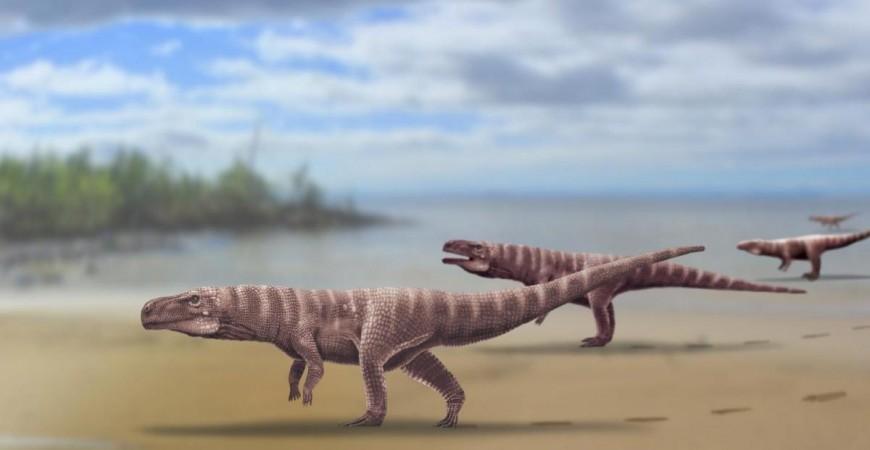A new study conducted by an international team of researchers has found that a crocodile species that lived around 120 million years ago might have walked across the planet using their hind legs.
Scientists who took part in the research made this conclusion after analyzing well-preserved footprints discovered at the Sacheon Jahye-ri, South Korea.

Crocodiles walked with Hind Legs
When scientists initially analyzed these footprints, they believed that it could be the foot impressions of an ancient reptile known as pterosaur. However, further studies suggested that these footprints do not belong to flying reptiles, as it had heel to toe impressions.
"At one site, the footprints were initially thought to be made by a giant bipedal pterosaur walking on the mudflat, we now understand that these were bipedal crocodile prints. The footprints measure around 24 centimeters, suggesting the track-makers had legs about the same height as human adult legs. These were long animals that we estimate were over three meters in length. And while footprints were everywhere on the site, there were no handprints," said Dr Anthony Romilio, a paleontologist at the University of Queensland in a recent statement.
As modern crocodiles are four-legged, scientists noted that these ancient crocodiles might have walked in two legs along with dinosaurs on the surface of the earth.
"Dinosaurs and their bird descendants walk on their toes. Crocodiles walk on the flat of their feet leaving clear heel impressions as humans do," said Kyung Soo Kim, a professor at the Chinju National University of Education in South Korea who led the research.
More details about these ancient crocodiles
Scientists noted that these footprints belonged to a crocodile species known as crocodylomorph. They also added that these crocodiles who lived before 120 million years were ancestors to modern-day crocodiles and alligators.
"Typical crocodiles walk in a squat stance and create trackways that are wide. Oddly, our trackways are very narrow looking - more like a crocodile balancing on a tight-rope," added Kim.














